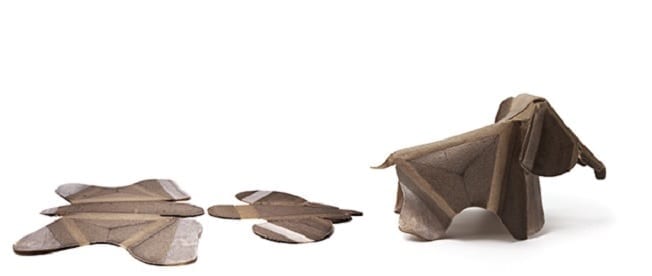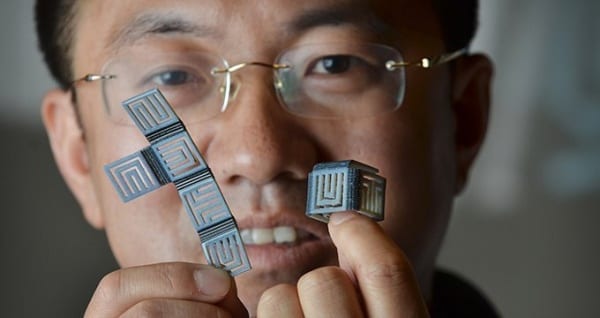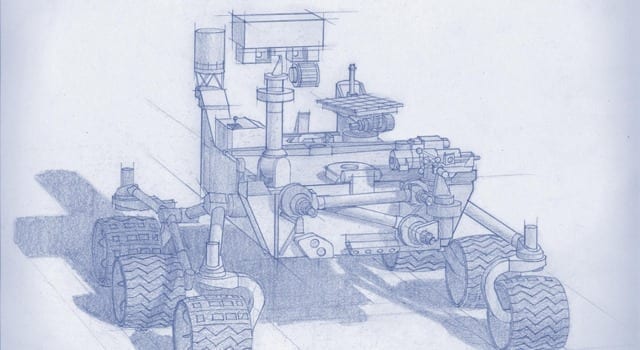
Pitt-led research team receives U.S. Army Research Office grant to develop 4D printing of adaptive materials
Imagine an automobile coating that changes its structure to adapt to a humid environment or a salt-covered road, better protecting the car from corrosion. Or consider a soldier’s uniform that could alter its camouflage or more effectively protect against poison gas or shrapnel upon contact.
A trio of university researchers from the University of Pittsburgh’s Swanson School of Engineering, Harvard School of Engineering and Applied Sciences, and the University of Illinois is proposing to advance 3D printing one step—or rather, one dimension—further. Thanks to an $855,000 grant from the United States Army Research Office, the team hopes to develop 4D materials, which can exhibit behavior that changes over time.
The team includes principal investigator Anna C. Balazs, the Robert v. d. Luft Distinguished Professor of Chemical Engineering in Pitt’s Swanson School of Engineering and a researcher in the computational design of chemo-mechanically responsive gels and composites. Co-investigators are Jennifer A. Lewis, the Hansjo?rg Wyss Professor of Biologically Inspired Engineering at the Harvard School of Engineering and Applied Sciences and an expert in 3D printing of functional materials; and Ralph G. Nuzzo, the G. L. Clark Professor of Chemistry and Professor of Materials Science and Engineering at the University of Illinois, a synthetic chemist who has created novel stimuli-responsive materials.
The three scientists will integrate their expertise to manipulate materials at nano and micro levels in order to produce, via 3D printing, materials that can modify their structures over time at the macro level. Three-dimensional printing, also known as additive manufacturing, is the process of creating a 3D object based upon a digital model by depositing successive layers of material.
“Rather than construct a static material or one that simply changes its shape, we’re proposing the development of adaptive, biomimetic composites that reprogram their shape, properties, or functionality on demand, based upon external stimuli,” Balazs explained. “By integrating our abilities to print precise, three-dimensional, hierarchically-structured materials; synthesize stimuli-responsive components; and predict the temporal behavior of the system, we expect to build the foundation for the new field of 4D printing.”
Lewis added that current 3D printing technology allows the researchers to build in complicated functionality at the nano and micro levels—not just throughout an entire structure, but also within specific areas of the structure. “If you use materials that possess the ability to change their properties or shape multiple times, you don’t have to build for a specific, one-time use,” she explained. “Composites that can be reconfigured in the presence of different stimuli could dramatically extend the reach of 3D printing.”
The Latest Bing News on:
4D Printing
- Nanoleaf Skylight starter kit review: Nanoleaf is looking upon April 26, 2024 at 5:00 pm
It’s a necessary evil. I have spent many hours with the Nanoleaf app thanks to one of my favorite bits of kit, the Nanoleaf 4D. I was looking forward to using Sync+ to extend the screen colors to the ...
- Drupa to explore Artificial Intelligence in the printing/imaging industryon April 26, 2024 at 2:26 am
At drupa in Düsseldorf in May and June, experts will present the drupa Imaging Summit for the first time as part of the "drupa next age" event series. TSpeakers from qualified companies will give ...
- Robotic nerve 'cuffs' could help treat a range of neurological conditionson April 26, 2024 at 2:00 am
Researchers have developed tiny, flexible devices that can wrap around individual nerve fibers without damaging them.
- Sustainable Methods for Metal AM Feedstock Production Revealed in Research Studyon April 24, 2024 at 12:20 pm
The AMGTA unveils key findings on the energy efficiency of metal AM feedstock processing approaches, shedding light on sustainable manufacturing practices in the additive ...
- Ole Miss professor receives NSF grant for work on 4D printingon April 23, 2024 at 3:52 pm
A University of Mississippi engineering professor has won the National Science Foundation's most prestigious award for early career researchers for his upcoming work in 4D printing.
- Drupa Imaging Summit: Importance Of Artificial Intelligence For Printing And Imaging Industryon April 23, 2024 at 12:37 pm
At the drupa Imaging Summit, the major trend topic of Imaging Artificial Intelligence will be one of the central themes to provide information on the current status and tools, discuss new product ...
- Best Monitors for Graphic Design in 2024on April 22, 2024 at 4:30 pm
The ViewSonic VP2756-4K brings sharp details through UHD resolution on a 27-inch screen. It uses an IPS panel that comes with ultra-thin bezels for an immersive view and is ideal for color grading or ...
- 3D Printing Market worth $37.4 billion by 2029 - Exclusive Report by MarketsandMarkets™on April 22, 2024 at 7:15 am
The 3D Printing market is projected to grow from USD 17.5 billion in 2024 and is estimated to reach USD 37.4 billion by 2029; it is expected to grow at a Compound Annual Growth Rate (CAGR) of 16.4% ...
- UM mechanical engineering professor earns NSF CAREER Awardon April 21, 2024 at 5:00 pm
A University of Mississippi engineering professor has won the National Science Foundation's most prestigious award for early career researchers for his upcoming work in 4D printing. The National ...
- Mechanical Engineering Professor Receives NSF CAREER Awardon April 19, 2024 at 6:58 am
The National Science Foundation awarded Yiwei Han, assistant professor of mechanical engineering, with an NSF Faculty Early Career Development Program grant. The award allots more than $576,000 toward ...
The Latest Google Headlines on:
4D Printing
[google_news title=”” keyword=”4D Printing” num_posts=”10″ blurb_length=”0″ show_thumb=”left”]
The Latest Bing News on:
Adaptive materials
- Adidas tailors uniforms for Northwest wheelchair basketball athleteson April 26, 2024 at 8:16 am
Adaptive Sports Northwest worked with Adidas designers in Portland to tailor gear for the athletes' performance needs.
- Fizik debuts Antares Adaptive 3D-printed saddleon April 25, 2024 at 10:00 pm
The evolution of digital 3D printing has allowed Fizik to develop a new saddle without the constraints or limitations imposed by traditional production methods and materials. The Adaptive saddle ...
- Making old buildings new again: the case for adaptive reuseon April 25, 2024 at 12:22 am
Extending a structure’s operational life helps maximize the built environment’s embodied energy and sustain the spirit older buildings bring to their communities.
- Promoting residential adaptive reuse in Seattle through policyon April 24, 2024 at 5:00 pm
Many of the submissions proposed policy changes that would ease the burden of making adaptive reuse a reality ... or greenhouse gas emissions caused by building materials, has not been as widely ...
- The move towards sustainable building practiceson April 24, 2024 at 7:30 am
Adaptive Homes Ltd., 2023 Revelstoke Chamber of Commerce Business Excellence Award winner in Sustainability, crafts quality builds.
- adidas Reveals Industry−First Adaptive Wheelchair Basketball Uniformson April 22, 2024 at 9:47 am
The adaptive basketball uniforms, tailored specifically for wheelchair and seated athletes, were created by adidas in collaboration with Adaptive Sports Northwest (ASNW), a Portland-based non-profit f ...
- Are these newly found rare cells a missing link in color perception?on April 19, 2024 at 12:00 pm
Using adaptive optics, scientists have identified elusive retinal ganglion cells in the eye's fovea that could explain how humans see red, green, blue, and yellow.
- Norview baseball gives adaptive athletes a chance to playon April 18, 2024 at 7:32 pm
Sports provides great platforms to do great things. Thursday saw the Norview baseball team take advantage of that, helping adaptive athletes prove that handicapped does not mean incapable.
- Groundbreaking on Berthoud's first adaptive park scheduled to begin in Mayon April 18, 2024 at 11:31 am
The goundbreaking on Berthoud's first adaptive park is scheduled to begin in May, according to an announcement Wednesday.
- MIT Researchers Unveil 3D Printer That Can Identify Unknown Materialson April 16, 2024 at 8:19 am
MIT researchers have developed a 3D printer that can automatically generate printer parameters for unknown materials.
The Latest Google Headlines on:
Adaptive materials
[google_news title=”” keyword=”adaptive materials” num_posts=”10″ blurb_length=”0″ show_thumb=”left”]










